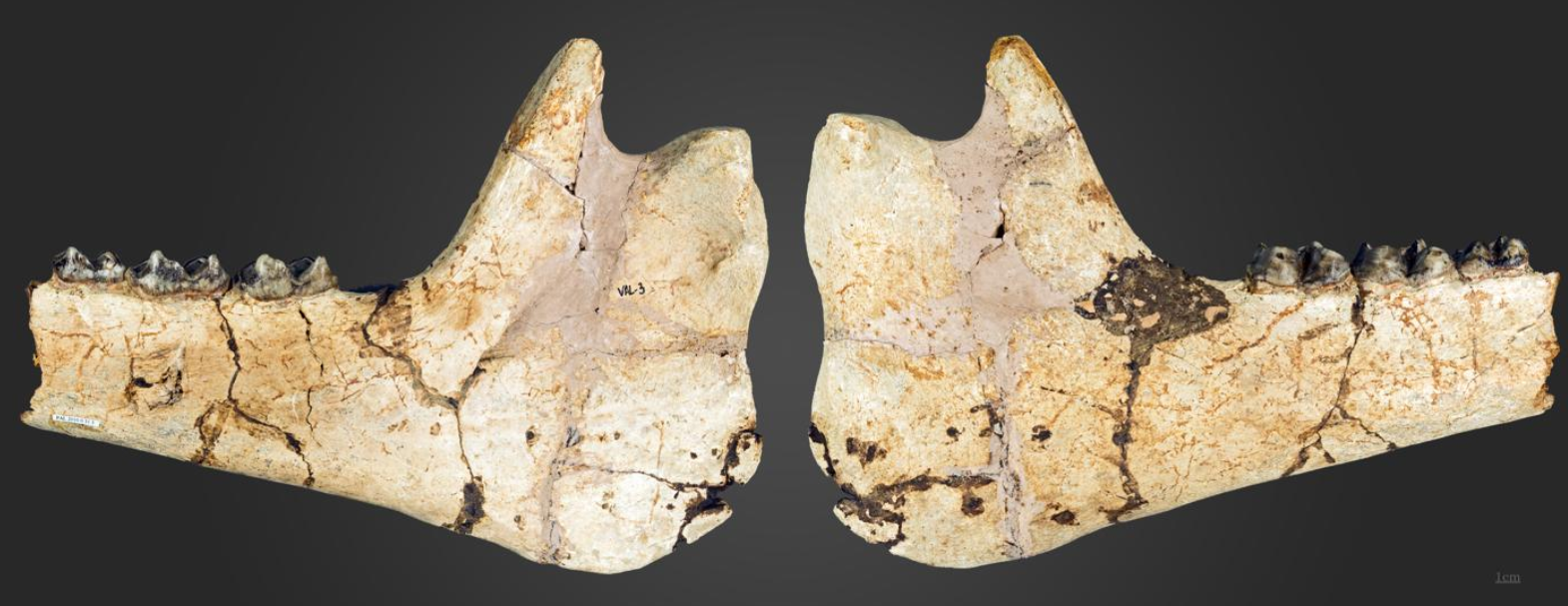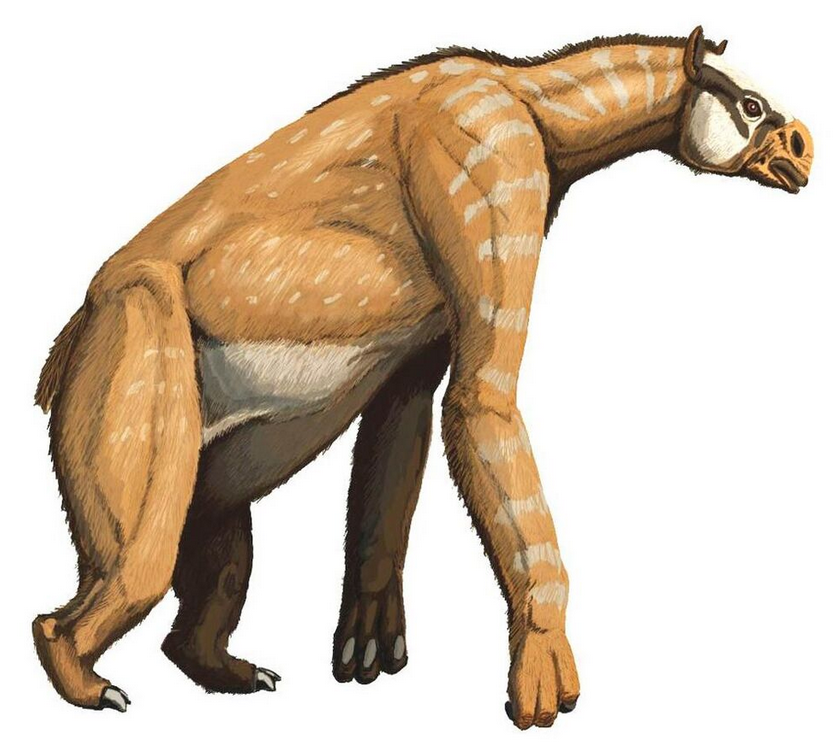
| Version | Summary | Created by | Modification | Content Size | Created at | Operation |
|---|---|---|---|---|---|---|
| 1 | Rita Xu | -- | 653 | 2022-11-22 01:34:55 |
Video Upload Options
Chalicotherium (Ancient Greek χαλιξ/khalix, khalik-: pebble/gravel + θηρίον/thērion, diminutive of θηρ/thēr : beast) is a genus of extinct odd-toed ungulates of the order Perissodactyla and family Chalicotheriidae, found in Europe, Africa, Asia, and North America from the Late Oligocene to Early Pliocene, 28.4–3.6 million years ago, existing for approximately 24.8 million years. This animal would look much like other chalicotheriid species: an odd-looking herbivore with long clawed forelimbs and stouter weight-bearing hindlimbs. The type species, Chalicotherium goldfussi, from Miocene and Pliocene Europe, was described by Johann Jakob Kaup in 1833.
1. Description


Chalicotherium, like many members of Perissodactyla, was adapted to browsing, though the chalicotheres were uniquely adapted to do so among ungulates. Its arms were long and heavily clawed, allowing them to walk on their knuckles only. The arms were used to reach for the branches of large trees and bring them close to its long head to strip them clean of leaves. The horse-like head itself shows adaptation to a diet of soft vegetation, since, as the animal reached sexual maturity, the incisors and upper canines were shed, suggesting that its muscular lips and the resulting gum pads were enough to crop fodder which was then processed by squarish, low-crowned molars.
Callosities on the ischium imply that these animals would sit on their haunches for extended periods of time, probably while feeding. Pad-supporting bony growth on the dorsal side of the manual phalanges is interpreted as evidence of knuckle-walking, which would probably be useful to avoid wearing down the claws, preserving them for use either as a forage-collecting rake or as a formidable defensive weapon, or both.
All of these characteristics show some convergence with such other creatures as ground sloths, great apes, bears (especially giant pandas), and a group of theropod dinosaurs known as therizinosaurs.
2. Classification
2.1. Taxonomic History


The type specimens for Chalicotherium goldfussi were found in the Upper Miocene strata of the Dinotherien-sande beds near Eppelsheim, in the Grand Duchy of Hesse, Germany. Johann Jakob Kaup, when describing this new animal in 1833, found the teeth to be pebble-like and named the creature accordingly. Later on, limbs found in strata located at Sansan in the department of Gers, Southwestern France, were first described as Macrotherium by Édouard Lartet in 1837. Further study of these fossil remains and subsequent finds by Filhol warranted a referral of the material described as Macrotherium to Chalicotherium.[1]
Referral history for each species is detailed in the species list below along with morphological and geographical data where available.
2.2. Species
Valid:
- Chalicotherium goldfussi J. J. Kaup, 1833.
- The type species, it was found in Upper Miocene beds located in Germany. It weighed around 1500 kg and was 2.6 m high at the shoulder.
- Chalicotherium brevirostris
- First described as Macrotherium brevirostris Colbert 1934, this species hails from the Upper Miocene Tung Gur Formation, Inner Mongolia, China.
- Chalicotherium salinum
- First described as Macrotherium salinum Forster Cooper, this species was first discovered at the Lower Pliocene Lower Siwaliks beds in India; its chronological and geographic range was later extended to the Middle and Upper Miocene, and to Pakistan and China, respectively.
Invalid:
- Chalicotherium antiquum J. J. Kaup, 1833.
- Found at the same locality as the type species, it was later found wanting of diagnostic features and sunk into the type species.
Misassigned specimens:
- Chalicotherium cf. C. brevirostris Wang et al., 2001.
- Hailing for the Tsaidam Basin, northern Qinghai-Tibetan Plateau, China.
- "Chalicotherium modicum" Stehlin, 1905.
- A nomen nudum, actually a Schizotherium priscum tooth.
- "Chalicotherium" bilobatum Cope.
- Hailing from the Oligocene of Saskatchewan, this very fragmentary specimen was the type on which Russel erected the genus Oreinotherium.
- Chalicotherium spp.
- Specimens found in two Tajikistan localities, thought to pertain to at least two different species.
References
- Anquetin,J.,Antoine,P.-O.,Tassy,P.,2007.Middle Miocene Chalicotheriinae(Mammalia, Perissodactyla)from France, with a discussion on chalicotheriine phylogeny. Zoological Journal of the Linnean Society 151, 577–608.




